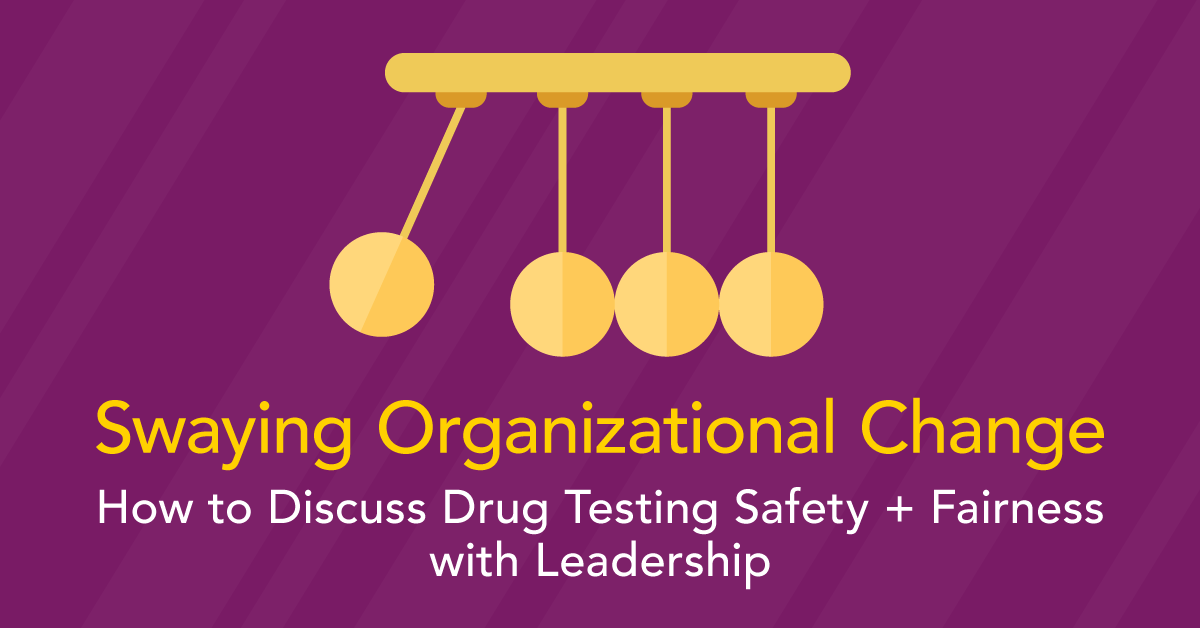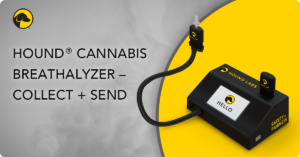
Swaying Organizational Change
Change isn’t always easy, but it is necessary for future-proofing your organization. The need for change can be brought on by any number of factors, from unprecedented times of a pandemic to the need to streamline organizational processes.
As a health and safety professional, organizations often turn to me to help them better execute decisions involving the well-being of employees. This change requires reexamining and updating policies as necessary. While this may seem straightforward, I have found this isn’t always the case throughout my career. But why? Safety is priority #1, right?
Impactful change isn’t limited to one area. It requires buy-in from stakeholders throughout the organization. Swaying organizational change often results in an overwhelming or discouraging feeling, but it doesn’t need to be.
Here’s how to be the change you want to be in your organization.
FOUR KEYS TO SUCCESSFUL CHANGE
As a young safety professional, I struggled to get things done. Don’t get me wrong, I was great at checking things off my to-do list; however, I never felt like I was making a difference. I wanted to make momentous changes, changes that would really make an impact on the safety and health of the employees.
I quickly realized I needed to become a master in the art of persuasion. I needed to figure out what was important to stakeholders while not sacrificing what was important to the end goal.
After years of trial and error, I created a simple recipe to sway organizational change. This secret sauce has four main ingredients and simple steps to follow for success:
- Identify the need
- Gather the data
- Rally support
- Provide a solution
IDENTIFY THE NEED
Identifying the need sounds easy enough; however, it is a critical first step. When making any decision, especially when buying something, I ask, “Is this a NEED or a WANT?” A need is something necessary to function, while a want is something that can improve the quality of life or work.
Understanding the difference between a need and a want will help in your initial decision-making process. To do this, you will want to research the change and reach out to trusted colleagues for input.
For example, cannabis legalization has caused concerning trends in construction, warehousing, and transportation industries. They have seen a sharp jump in failed drug tests.1 By asking around about this specific topic, I’ve heard varied responses from safety directors and HR leaders. This includes questioning the ethics of terminating employees who tested positive for THC when the employee consumed cannabis outside work hours and was not impaired at work. Additionally, I hear a lot about the inability to fill positions due to positive THC results in their pre-employment screening panel.
Based on these responses, the NEED is the ability to recruit and retain employees while maintaining safe workplaces. A proposal for leadership would be to address current cannabis policies in the company’s drug testing program and consider novel testing methods – but would this proposal be supported by data and other stakeholders?
GATHER THE DATA
Famed statistician Dr. W. Edwards Deming said it best, “In God we trust. All others must bring data.” We have all been there. We know the information we are providing is sound. We identified the need, but this is not always enough to rally the C-Suite to buy in – just yet. You need objective data and need to demonstrate the return on investment (ROI) of your proposal.
You may feel like I just took the warm fuzzies out of your awesome idea to change the lives of your employees, but this is the real world and money (and numbers) talk. I learned this early in my career during a conversation to sway a sales executive in the grocery retail industry. I figured out how to use profit margins to calculate how many bags of potato chips we would need to sell to make back the cost of one claim. When he saw the number of bags it would take (in the millions), he quickly prioritized safety.
I have used this formula throughout my career to help me quickly quantify the true cost of workplace injuries, and how to frame it for the audience I am addressing. But no matter how many stories I tell, data, especially financial data, always seal the deal.
Luckily, many organizations have made it easy to provide cost savings with online calculators. Building on our example above, cannabis reform across the U.S. continues to increase worker access to cannabis, but testing data2 supports the need for a proposal to update workplace cannabis policies:
- Over five years, positivity for cannabis in the general U.S. workforce increased 50% (2.6% in 2017 versus 3.9% in 2021).
- In 2021, general workforce urine cannabis positivity was more than 63% higher in post-accident testing than pre-employment testing.
- Year over year increases in cannabis positivity across all employee testing categories in 2021, with oral fluid positivity greater than 14%.
Once you have the data to support the need for change, it’s time to rally support around your proposal.
RALLY SUPPORT
One of my favorite sayings, albeit cheesy, is “Teamwork makes the dream work.” Change doesn’t happen in a silo but ripples across the organization. Rallying support for your proposal will increase the chances of leadership approving and adopting it.
So how do you build your dream team? Look around your organization and find stakeholders who will also benefit from your proposal. If you are not sure where to look, start with these departments:
- Operations – Ask about the impact on all employees and be prepared with information on training needs. If your company has union employees, determine how it will impact union relations and future contracts.
- Human Resources – Ask about current policies and procedures and the turnover statistics; how long it takes to fill vacant positions.
- Safety – Ask about current safety programs and risk mitigation strategies and determine if this change will help those efforts.
- Legal – Ask for legal advice (internal or external) about the change as there may be different legal requirements for federal, state, and local jurisdictions.
It is critical to remember the viewpoint of every stakeholder has merit. Be sure to weigh everyone’s concerns and key considerations to your proposal.
Now that you have your support, there is one last thing you need to do; provide a solution.
PROVIDE A SOLUTION
You have the buy-in from key stakeholders and even leadership agrees the change is needed. Before you take a victory lap around the office, you are asked, “Now what? How are YOU going to accomplish this?”
For this step, come prepared with options for how to make your proposal work. Chances are, you already have a few ideas in mind from your research and discussions. So don’t wait for others to tell you what to do; bring the solution to them. They will be impressed with your due diligence and that you took the time to be thorough. Be sure to refer to legal and state laws to make certain the changes are in line with state laws and federal regulations in your proposal.
WHAT’S NEXT
These steps for swaying organizational change are nothing new or groundbreaking, but they have proven successful for me many times. It is critical to remember policy and procedure changes take time, so starting as soon as possible is essential once the need is identified. While individually, each proposal may not be the momentous change to the safety and health of the employees you were hoping to achieve all at once, even the little successes in swaying organizational change will build toward creating the overarching impact you were hoping to have.
At Hound Labs, we have various industry experts to provide insight about safety and risk, drug testing, and cannabis testing technology. Be sure to subscribe to our weekly blog updates and monthly newsletters to get the latest industry insights from them.

August 11, 2022
By JAIME FEINBERG
Share














